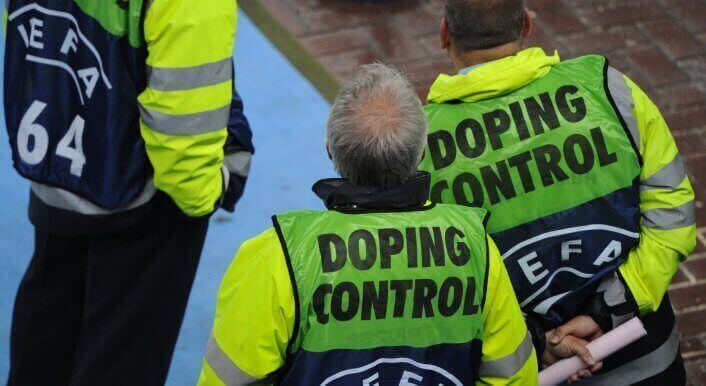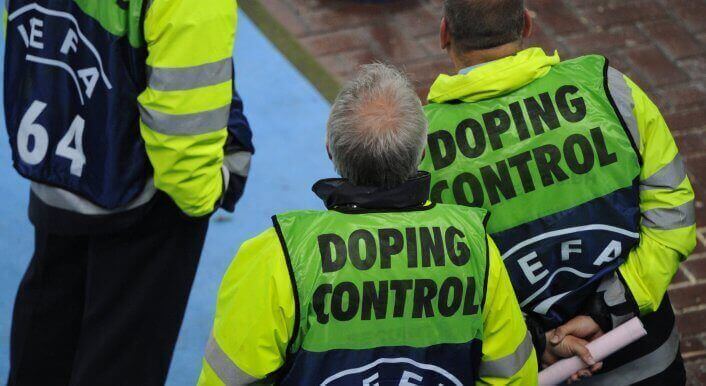The Long Journey of Wc Doping Samples
Doping controls during football world cups are extremly ineffective. Not a single player has been tested positive in the past four world cups. And it could get even worse in Brazil as there is the samples might not be able to analysed in time.

Every evening, an airplane leaves Sao Paulo to head to Lausanne. Its precious carriage: Cooled doping samples from the world cup’s footballers. One day it’s samples of German and Portuguese players, the next day it’s urin and blood of Spanish and Dutch players on board. More than 20 of those long flights are scheduled.
You might wonder what’s all the fuzz about and why the samples have to be flown half way around the globe. There’s a delicate background to it. The laboratory in Rio de Janeiro lost its WADA accredidation last year after samples have been falsely analysed as positive. Therefore, FIFA looked for an alternative and picked the distant but trusted lab in Lausanne. Interestingly FIFA could have also picked labs in the US, Canada are other South American countries. Meanwhile, FIFA has admitted its solution could cause serious logistic problems.
Last week, German radio station HR Info put the finger in this particular wound again. The biggest problem is caused by the limited time the Lausanne lab has to analyse the samples. FIFA medical chief Michel D’Hooghe told AP back in April he isn’t „entirely sure“ if the results will be available before the next match a team.
So we also handed in a request. We were keen on getting more information about those doping flights and asked for a flight schedule. However, FIFA refused to hand us those details. Instead, a spokesperson came up with a rather general and very smooth answer: „The Lausanne laboratory is prepared to work 24 hours a day in order to provide the results before the next match of a team.“
So we decided to do the maths ourselves and took a look at the flight route and the probable time it takes to analyse the samples.
After every match, two players of each team are going to be tested. As evening matches end between 5 and 6pm local time and players often need a little while to be able to give a urin sample, it is fair to say this whole process takes up to four hours. That means the samples will leave the stadium at around 10pm.
If you look at the map you easily see the partly massive distances between the stadiums. And keep in mind: The doping flights always start in Sao Paulo.
Considering the distances and Brazil’s infrastructure, the samples need to be taken to Sao Paulo by plane. We listed the approximate flight time in the table below.
Once they’ve reached Sao Paulo, the cooled samples will all be put in to the plane to Lausanne. Let’s say everything works according to plan, then the plane leaves Brazil in the early morning after the match and touches down in Switzerland 14 hours later. So it takes a whole day to take the samples from the stadium to the lab. Again, only if everything works out smoothly.
Andrea Gotzmann, CEO of the German anti-doping agency NADA, explained in a debate on May 21 that a lab needs indeed 24 hours to confirm a sample as negativ. However, if some dodgy parameters come up during the analysis the whole process is much, much longer as everything has to be done again more detailled.
FIFA anti-doping rules (61.1) also state that a player has another 12 hours to request the B-sample if he was tested positive. And now the tricky bit: For the B-sample to be opened, a representative of the player’s club or national team has to be present. In this case, he or she has to be in Lausanne.
To sum it all up: The teams at the world cup have to play every four days. If a player is tested positive it would be highly unlikely that this test will be published before the next match. Another concern we haven’t even mentioned yet is the rising risk of the sample to be damaged the longer the transport is.
But to be frank that’s all very much a theory. The probability of a player to be tested positive during the world cup is pretty close to zero. So far only three players were caught during a world cup. Ernst Jean-Joseph (1974) from Haiti and Willie Johnston (1978) from Scotland were caught at a time were doping tests were carried out rather sporadic. Only since 1994 as FIFA states in this document (p. 10) tests are carried out and analysed professionally. In 1994, no other than Diego Maradona was tested positive for ephedrine and was subsequently excluded from the world cup.
After 1994? Absolutely nothing! Over the past four world cups more than 4000 samples were taken and not a single one was positive. So no one’s doping anymore on football’s biggest stage? Or is it the doping controls that are ineffective?
FIFA is eager to praise its own anti-doping fight and the introduction of the biological passport. For the first time, blood and urin parameters are taken to create a biological profile of a player. Tests for the passport have started March 1, the German squad was tested on May 26. Before the world cup, only NADA might test the German players again, but those results won’t be included in the biological passport. Other national teams were tested as well, but some player missed the FIFA tests. We started this Google Document where you can read all tests from every country. Feel free to share additional information.
–> LET US COLLABORATE. SPREAD OUR GOOGLE DOC. <–
Don’t get me wrong, the passport is the right way to go. But in the current state it has hardly any value. So considering the logistic challenges it would be a massive surprise if a world cup player will be tested positive.



